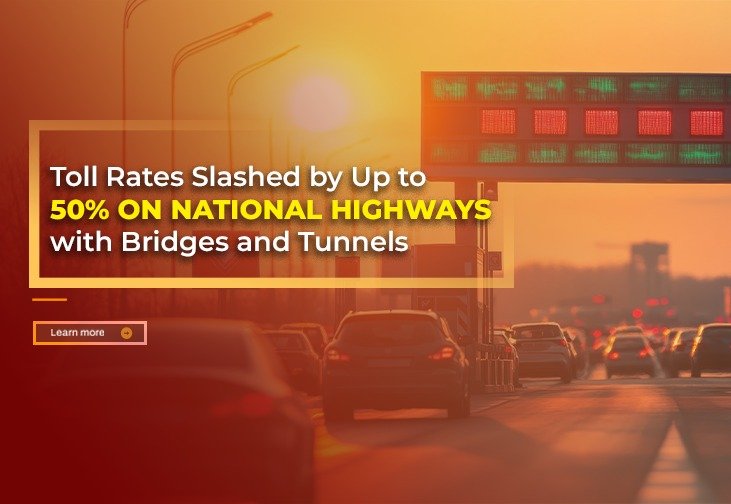In a significant move aimed at benefiting commuters and improving highway infrastructure utilization, the Indian government has announced a reduction in toll rates by up to 50% on specific national highways. The reduced toll charges apply to highway stretches that have more than 70% of their length covered by structures like flyovers, bridges, viaducts, tunnels, or elevated roads. This new policy, approved by the Ministry of Road Transport and Highways, is expected to bring considerable relief to daily commuters and logistics operators who frequently use such stretches. According to official reports, the revised toll policy will prevent users from paying high charges for sections that don’t involve open driving roads. Previously, toll was calculated based on the overall length of the stretch, irrespective of the type of construction. With this new rule, users will only pay for the actual usage of road space, and not the high-cost infrastructure alone, thereby making toll payments more rational and transparent.
Why the Toll Rates Have Been Reduced
The decision to slash toll charges follows long-standing concerns from commuters and industry stakeholders about the unfair pricing of certain highway sections. Many argued that when a large portion of the highway consists of structures like bridges and tunnels, the actual driving experience and cost do not justify the earlier toll amounts. By revising the toll formula, the government aims to align charges with road usage more logically. It also encourages better distribution of highway traffic and enhances the fairness of the toll collection system. This change comes as a part of the government’s broader efforts to modernize highway policies and make road travel more accessible and affordable.
Who Will Benefit from the New Toll Rates
This reform will particularly benefit drivers who frequently travel on infrastructure-heavy stretches of highways—routes that pass through hilly areas, river crossings, or urban zones where elevated roads and flyovers are common. Commercial transport operators, logistics companies, and regular long-distance travelers stand to gain the most, as their toll expenses can significantly reduce over time. Notably, this move could also improve traffic flow on alternate routes, as more users may opt for these highways due to reduced costs.
When and Where the New Rates Will Apply
The revised toll rates will apply to new highway projects and to some existing stretches where the construction meets the 70% infrastructure criterion. Implementation has already begun in selected regions and will be expanded gradually across the national highway network. The National Highways Authority of India (NHAI) is expected to issue fresh toll rate charts for applicable routes, and users are advised to check updates on official platforms before planning their travel.
Final Thoughts
With the reduction in toll charges, the government is taking a much-needed step toward creating a more equitable and user-friendly highway system. The move not only reflects responsiveness to public concerns but also sets the stage for a fairer tolling mechanism across the country. As infrastructure continues to grow, policy changes like this are crucial in balancing development with affordability.




